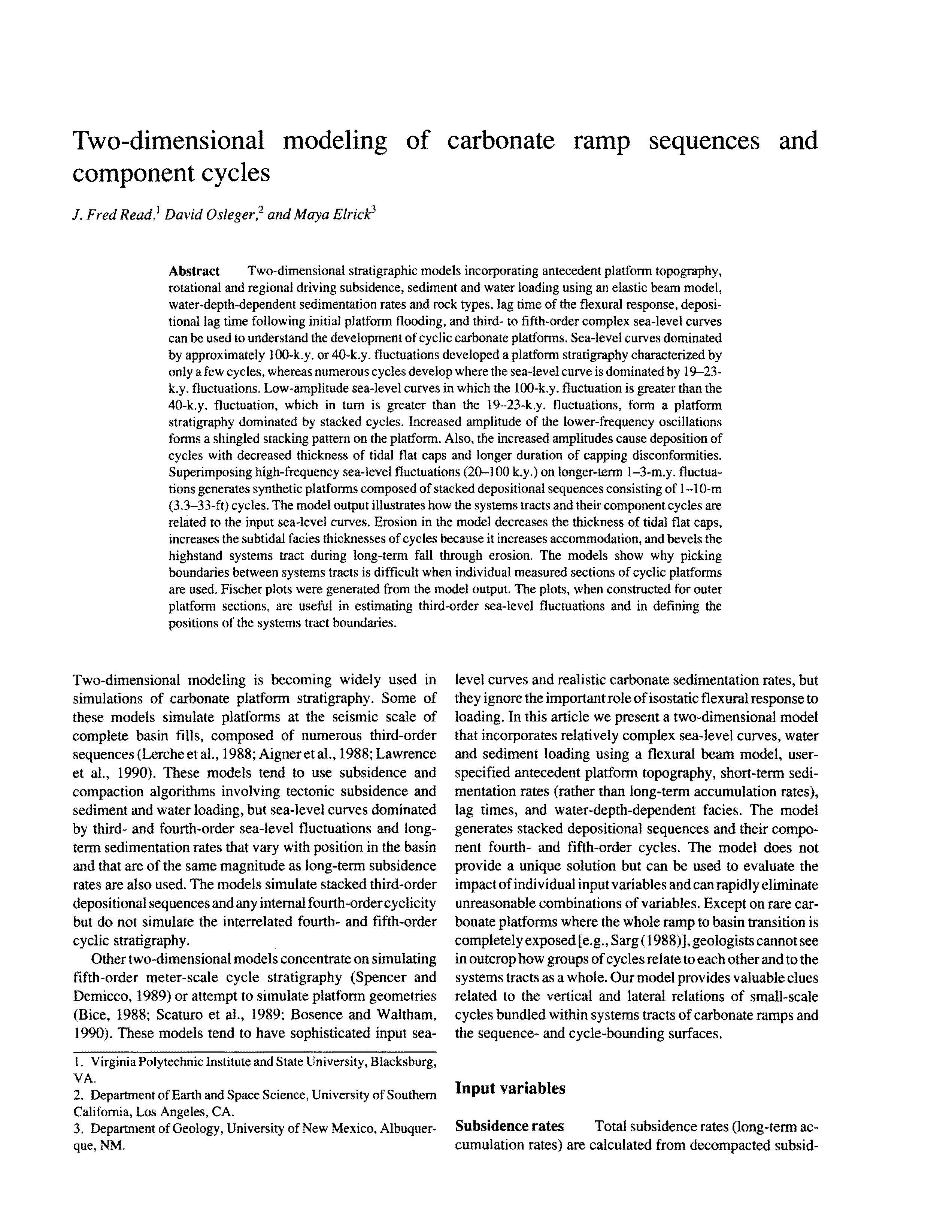Two-dimensional modeling of carbonate ramp sequences and component cycles
DOI:
https://doi.org/10.17161/kgsbulletin.no.233.20473Abstract
Two-dimensional stratigraphic models incorporating antecedent platform topography, rotational and regional driving subsidence, sediment and water loading using an elastic beam model, water-depth-dependent sedimentation rates and rock types, lag time of the flexural response, depositional lag time following initial platform flooding, and third- to fifth-order complex sea-level curves can be used to understand the development of cyclic carbonate platforms. Sea-level curves dominated by approximately 100-k.y. or 40-k.y. fluctuations developed a platform stratigraphy characterized by only a few cycles, whereas numerous cycles develop where the sea-level curve is dominated by 19-23 k.y. fluctuations. Low-amplitude sea-level curves in which the 100-k.y. fluctuation is greater than the 40-k.y. fluctuation, which in turn is greater than the 19-23-k.y. fluctuations, form a platform stratigraphy dominated by stacked cycles. Increased amplitude of the lower-frequency oscillations forms a shingled stacking pattern on the platform. Also, the increased amplitudes cause deposition of cycles with decreased thickness of tidal flat caps and longer duration of capping disconformities. Superimposing high-frequency sea-level fluctuations (20-100 k.y.) on longer-term 1-3-m.y. fluctuations generates synthetic platforms composed of stacked depositional sequences consisting of 1-10-m (3.3-33-ft) cycles. The model output illustrates how the systems tracts and their component cycles are related to the input sea-level curves. Erosion in the model decreases the thickness of tidal flat caps, increases the subtidal facies thicknesses of cycles because it increases accommodation, and bevels the highstand systems tract during long-term fall through erosion. The models show why picking boundaries between systems tracts is difficult when individual measured sections of cyclic platforms are used. Fischer plots were generated from the model output. The plots, when constructed for outer platform sections, are useful in estimating third-order sea-level fluctuations and in defining the positions of the systems tract boundaries.
Downloads

